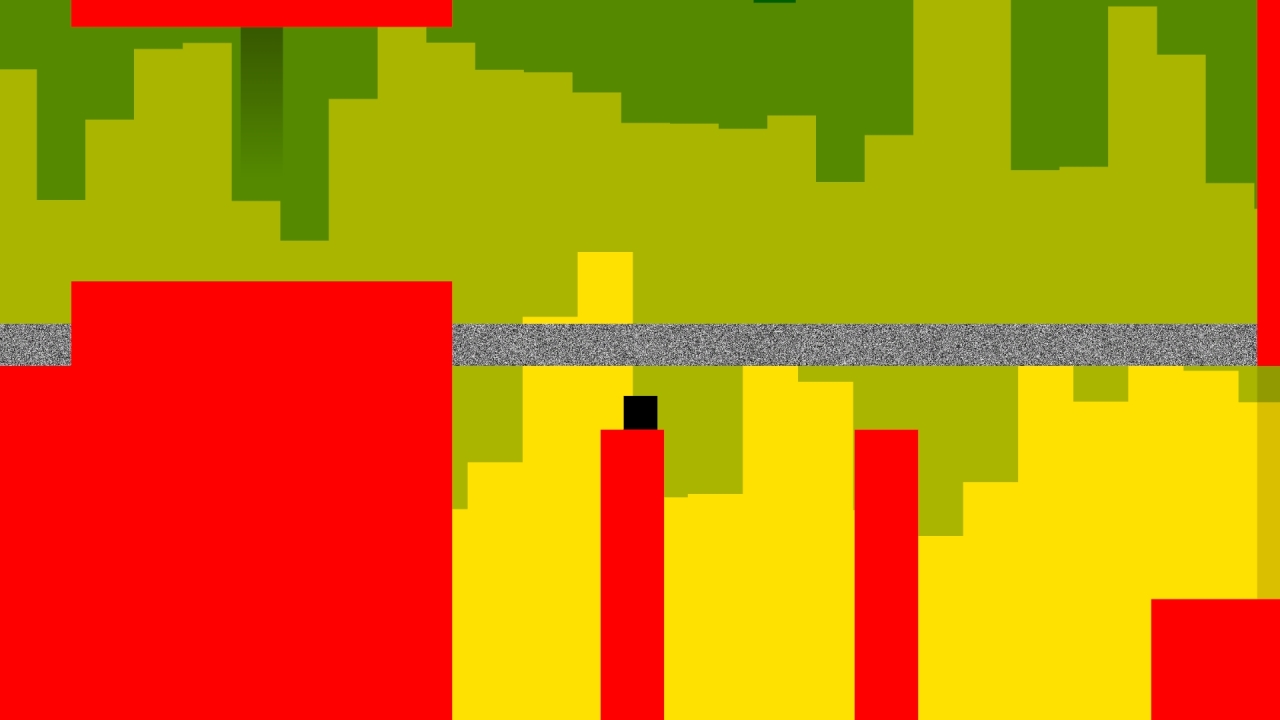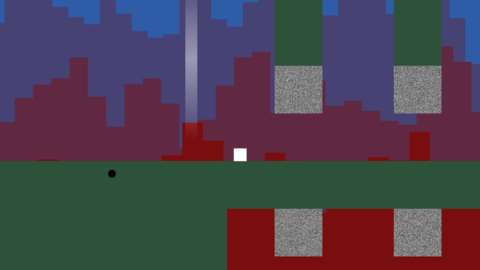In modern electronic music, the rhythm of dubstep--and most club music--typically moves at a brisk 140 beats per minute. Those who are familiar with the club scene would agree that when the music plays hot, the audience lets loose with an overwhelming urge to move and sway with the rhythm as if one entity. The feeling can be difficult to describe to someone who hasn't been on the dance floor. 140 is a 2D platformer that attempts to re-create this coalesced consciousness without the overpriced ticket rates, sweatiness, and questionable substances. The game blends colorful, abstract visuals and an exciting soundtrack that invites you to solve 140's secrets by tapping into the heart of the music and moving with the beat.
A pet project of programmer Jeppe Carlsen, who was lead gameplay designer of 2010's Limbo, 140 takes some cues from Playdead's macabre indie platformer. And like its cousin, the game unceremoniously drops you into a world fraught with deadly pitfalls and ensnaring lures. 140 provides a generous number of checkpoints throughout each of the game's three stages, thus delivering an inherent sense of awareness and accomplishment through its deceptively deadly design. You guide the protagonist--a square that transforms into a ball when moving and a triangle when jumping--through a series of clever puzzles designed to be solved by using a blend of brainpower, spatial awareness, and precise muscle control.

140 looks clean and simple, forgoing organic architecture in favor of sharp angles reminiscent of a bygone era. Colorful blocks dance to the hi-hats and bass drops that compose the energetic soundtrack. Though made up of simple shapes, the game is a spectacle of color, animation, and noise, which works harmoniously against a backdrop composed of bars rising and falling to the music, much like a graphic equalizer.
The soundtrack powers the platforming in 140. Blocks disappear and reappear, jump pads activate and launch you over obstacles or across a room, and lifts move around the environment, all in accordance to the beat. Some blocks slowly dissipate when touched, while others may form a snaking path that can either aid or hinder your progress. Advancement in a stage requires you to survive long enough to nab a "key," disguised as a lazily floating orb. Acquiring the orb and guiding it to a clearly distinguished trigger point sparks an explosive aural and visual metamorphosis of the stage, allowing further progression with newly appeared platforms that stir to life with the music's sudden change in pace.
Much like the dance floor full of sweating, swaying concertgoers, moving to the music while solving puzzles brings an overwhelming sense of satisfaction.
The soundtrack for 140 is more than just music; it is its heartbeat. Putting your finger on the game's pulse is the most enjoyable way to play. Much like the dance floor full of sweating, swaying concertgoers, moving to the music while solving puzzles brings an overwhelming sense of satisfaction. There was more than one occasion when I felt my body moving in tune to the soundtrack, my fingers tapping at the keyboard while my head nodded along. Sadly, this sense of accomplishment is something not easily repeated. Once the puzzles are mastered, further visits don't feel particularly rewarding, and while completing the game lets you access any one of the three stages in the menu, I didn't feel compelled to give it a second run.
The platforming in 140 is superb. It wasn't possible for me to escape the game unscathed, but most of my deaths were brought on by miscalculating a jump or being just a little too quick on the draw. There was never a moment when I blamed the game for my failings. During the first half hour, the game's learning curve ramps up at a steady pace. This allows you to test the game's boundaries and freely explore the environment. However, the game sharply increases its level of challenge in the second half, turning what was once a game about puzzle solving and rhythm into one of fast-killing traps that prefers quick reflexes over brainpower. It is not enough to ruin the entire experience, but the difficulty spike is too jarring.

Each of the roughly 20-minute stages is capped with a boss battle against geometric shapes made of the antagonistic static that haunts 140's many corridors. Breaking the familiar pacing of the game, the boss fights rely more on quick muscle movement than planning and execution. Each of the three battles brings a different challenge; one mimics bullet-hell shooters, while another flings triangles at you that destroy on impact. The final encounter is particularly tough, requiring mental gymnastics combined with fast reflexes, and completing the game unlocks three Dark World levels--basically the inverse of the originals, but with an additional challenge: you are given only one chance to complete the level. One slipup and it's back to the menu screen.
Though the brutal rise in difficulty near the end mars the adventure, it doesn't ruin the overall mood, and the cover charge is more than reasonable for this particular night at the club. Grab a colorful cocktail and head to the dance floor!